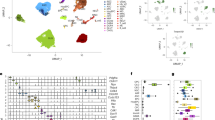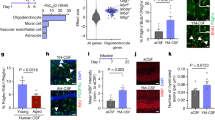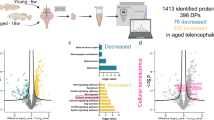Abstract
Regenerative therapeutics hold the promise of self-renewal and repair. Ageing and age-associated neurodegenerative diseases are marked by a decline in self-renewal and repair, but a capacity for regeneration is retained. The challenge faced by researchers developing molecular therapeutics to promote self-renewal in the nervous system is to activate regenerative and repair pathways often in the context of progressive degeneration. Neurosteroids regulate both regeneration and repair systems in the brain, and among this class of molecules, allopregnanolone has been broadly investigated for its role to promote regeneration in both the central and peripheral nervous systems. In the brain, allopregnanolone induced generation and survival of new neurons in the hippocampus of both aged mice and mice with Alzheimer disease, accompanied by restoration of associative learning and memory function. In the brain of mice with Alzheimer disease, allopregnanolone increased liver X receptor and pregnane X receptor expression, reduced amyloid-β and microglial activation, and increased markers of myelin and white matter generation. Therapeutic windows for efficacy of allopregnanolone were evident in the brains of mice with both normal ageing and Alzheimer disease. Allopregnanolone dose and a regenerative treatment regimen of intermittent allopregnanolone exposure were determining factors regulating therapeutic efficacy. Allopregnanolone serves as proof of concept for therapeutics that target endogenous regeneration, windows of therapeutic opportunity for regeneration, and critical system biology factors that will determine the efficacy of regeneration.
Key Points
-
The neurosteroid allopregnanolone promotes regeneration in the brain, recovery of learning and memory function, and reduces Alzheimer disease pathology in preclinical studies of efficacy
-
Therapeutic windows of allopregnanolone preclinical efficacy are defined by age and Alzheimer disease burden
-
Allopregnanolone administered intermittently to synergize with temporal cycles of endogenous regeneration promoted renewal and repair, whereas continuous infusions of allopregnanolone were antiregenerative in mouse models of Alzheimer disease
-
Allopregnanolone is poised to become the first endogenous regenerative therapeutic to be clinically developed for the prevention, delay or treatment of Alzheimer disease
This is a preview of subscription content, access via your institution
Access options
Subscribe to this journal
Receive 12 print issues and online access
$209.00 per year
only $17.42 per issue
Buy this article
- Purchase on Springer Link
- Instant access to full article PDF
Prices may be subject to local taxes which are calculated during checkout





Similar content being viewed by others
References
Baulieu, E. E. Neurosteroids: of the nervous system, by the nervous system, for the nervous system. Recent Prog. Horm. Res. 52, 1–32 (1997).
Baulieu, E. E. & Schumacher, M. Neurosteroids, with special reference to the effect of progesterone on myelination in peripheral nerves. Mult. Scler. 3, 105–112 (1997).
Melcangi, R. C. & Panzica, G. Neuroactive steroids: an update of their roles in central and peripheral nervous system. Psychoneuroendocrinology 34 (Suppl 1), S1–S8 (2009).
Mellon, S. H. & Griffin, L. D. Neurosteroids: biochemistry and clinical significance. Trends Endocrinol. Metab. 13, 35–43 (2002).
Bishop, N. A., Lu, T. & Yankner, B. A. Neural mechanisms of ageing and cognitive decline. Nature 464, 529–535 (2010).
Skovronsky, D. M., Lee, V. M. & Trojanowski, J. Q. Neurodegenerative diseases: new concepts of pathogenesis and their therapeutic implications. Annu. Rev. Pathol. 1, 151–170 (2006).
Encinas, J. M. et al. Division-coupled astrocytic differentiation and age-related depletion of neural stem cells in the adult hippocampus. Cell Stem Cell 8, 566–579 (2011).
Kuhn, H. G., Dickinson-Anson, H. & Gage, F. H. Neurogenesis in the dentate gyrus of the adult rat: age-related decrease of neuronal progenitor proliferation. J. Neurosci. 16, 2027–2033 (1996).
Lazarov, O., Mattson, M. P., Peterson, D. A., Pimplikar, S. W. & van Praag, H. When neurogenesis encounters aging and disease. Trends Neurosci. 33, 569–579 (2010).
Lugert, S. et al. Quiescent and active hippocampal neural stem cells with distinct morphologies respond selectively to physiological and pathological stimuli and aging. Cell Stem Cell 6, 445–456 (2010).
Lugert, S. & Taylor, V. Neural stem cells: disposable, end-state glia? Cell Stem Cell 8, 464–465 (2011).
Singh, C. et al. Allopregnanolone restores hippocampal-dependent learning and memory and neural progenitor survival in aging 3×TgAD and nonTg mice. Neurobiol. Aging 33, 1493–1506 (2012).
Wang, J. M. et al. Allopregnanolone reverses neurogenic and cognitive deficits in mouse model of Alzheimer's disease. Proc. Natl Acad. Sci. USA 107, 6498–6503 (2010).
Rodriguez, J. J. et al. Impaired adult neurogenesis in the dentate gyrus of a triple transgenic mouse model of Alzheimer's disease. PLoS ONE 3, e2935 (2008).
Brinton, R. D. The healthy cell bias of estrogen action: mitochondrial bioenergetics and neurological implications. Trends Neurosci. 31, 529–537 (2008).
Brinton, R. D. Estrogen-induced plasticity from cells to circuits: predictions for cognitive function. Trends Pharmacol. Sci. 30, 212–222 (2009).
Naylor, J. C. et al. Allopregnanolone levels are reduced in temporal cortex in patients with Alzheimer's disease compared to cognitively intact control subjects. Biochim. Biophys. Acta 1801, 951–959 (2010).
Yang, S. Y., He, X. Y. & Schulz, H. Multiple functions of type 10 17beta-hydroxysteroid dehydrogenase. Trends Endocrinol. Metab. 16, 167–175 (2005).
Herrup, K. & Yang, Y. Cell cycle regulation in the postmitotic neuron: oxymoron or new biology? Nat. Rev. Neurosci. 8, 368–378 (2007).
Schumacher, M. et al. Progesterone synthesis in the nervous system: implications for myelination and myelin repair. Front. Neurosci. 6, 10 (2012).
Sun, C. et al. Allopregnanolone increases the number of dopaminergic neurons in substantia nigra of a triple transgenic mouse model of Alzheimer's disease. Curr. Alzheimer Res. 9, 473–480 (2012).
Wang, J. M., Johnston, P. B., Ball, B. G. & Brinton, R. D. The neurosteroid allopregnanolone promotes proliferation of rodent and human neural progenitor cells and regulates cell-cycle gene and protein expression. J. Neurosci. 25, 4706–4718 (2005).
Melcangi, R. C. et al. Role of neuroactive steroids in the peripheral nervous system. Front. Endocrinol. (Lausanne) 2, 104 (2011).
Deng, W., Saxe, M. D., Gallina, I. S. & Gage, F. H. Adult-born hippocampal dentate granule cells undergoing maturation modulate learning and memory in the brain. J. Neurosci. 29, 13532–13542 (2009).
Rodriguez, J. J., Jones, V. C. & Verkhratsky, A. Impaired cell proliferation in the subventricular zone in an Alzheimer's disease model. Neuroreport 20, 907–912 (2009).
Haughey, N. J. et al. Disruption of neurogenesis in the subventricular zone of adult mice, and in human cortical neuronal precursor cells in culture, by amyloid beta-peptide: implications for the pathogenesis of Alzheimer's disease. Neuromolecular Med. 1, 125–135 (2002).
Aimone, J. B., Deng, W. & Gage, F. H. Resolving new memories: a critical look at the dentate gyrus, adult neurogenesis, and pattern separation. Neuron 70, 589–596 (2011).
Deng, W., Aimone, J. B. & Gage, F. H. New neurons and new memories: how does adult hippocampal neurogenesis affect learning and memory? Nat. Rev. Neurosci. 11, 339–350 (2010).
Shors, T. J., Townsend, D. A., Zhao, M., Kozorovitskiy, Y. & Gould, E. Neurogenesis may relate to some but not all types of hippocampal-dependent learning. Hippocampus 12, 578–584 (2002).
Shors, T. J. et al. Neurogenesis in the adult is involved in the formation of trace memories. Nature 410, 372–376 (2001).
Bartzokis, G. Alzheimer's disease as homeostatic responses to age-related myelin breakdown. Neurobiol. Aging 32, 1341–1371 (2011).
Kuczynski, B. et al. White matter integrity and cortical metabolic associations in aging and dementia. Alzheimers Dement. 6, 54–62 (2010).
Ringman, J. M. et al. Diffusion tensor imaging in preclinical and presymptomatic carriers of familial Alzheimer's disease mutations. Brain 130, 1767–1776 (2007).
Yao, J., Rettberg, J. R., Klosinski, L. P., Cadenas, E. & Brinton, R. D. Shift in brain metabolism in late onset Alzheimer's disease: implications for biomarkers and therapeutic interventions. Mol. Aspects Med. 32, 247–257 (2011).
Chen, S. et al. Allopregnanolone promotes regeneration and reduces beta-amyloid burden in a preclinical model of Alzheimer's disease. PLoS ONE 6, e24293 (2011).
Desai, M. K. et al. Triple-transgenic Alzheimer's disease mice exhibit region-specific abnormalities in brain myelination patterns prior to appearance of amyloid and tau pathology. Glia 57, 54–65 (2009).
Saher, G. et al. High cholesterol level is essential for myelin membrane growth. Nat. Neurosci. 8, 468–475 (2005).
Rupprecht, R. et al. Translocator protein (18 kDa) (TSPO) as a therapeutic target for neurological and psychiatric disorders. Nat. Rev. Drug Discov. 9, 971–988 (2010).
Bateman, R. J. et al. Clinical and biomarker changes in dominantly inherited Alzheimer's disease. N. Engl. J. Med. 367, 795–804 (2012).
Reitz, C., Brayne, C. & Mayeux, R. Epidemiology of Alzheimer disease. Nat. Rev. Neurol. 7, 137–152 (2011).
Jack, C. R. Jr. et al. Hypothetical model of dynamic biomarkers of the Alzheimer's pathological cascade. Lancet Neurol. 9, 119–128 (2010).
Reiman, E. M. & Jagust, W. J. Brain imaging in the study of Alzheimer's disease. Neuroimage 61, 505–516 (2012).
Weiner, M. W. et al. The Alzheimer's Disease Neuroimaging Initiative: a review of papers published since its inception. Alzheimers. Dement. 8 (Suppl 1) S1–68 (2012).
Lesne, S. et al. A specific amyloid-beta protein assembly in the brain impairs memory. Nature 440, 352–357 (2006).
De Strooper, B., Vassar, R. & Golde, T. The secretases: enzymes with therapeutic potential in Alzheimer disease. Nat. Rev. Neurol. 6, 99–107 (2010).
Irwin, R. W., Wang, J. M., Chen, S. & Brinton, R. D. Neuroregenerative mechanisms of allopregnanolone in Alzheimer's disease. Front. Endocrinol. (Lausanne) 2, 117 (2011).
Kang, J. & Rivest, S. Lipid metabolism and neuroinflammation in Alzheimer's disease: a role for liver X receptors. Endocr. Rev. 33, 2011–1049 (2012).
Mandrekar-Colucci, S., Karlo, J. C. & Landreth, G. E. Mechanisms underlying the rapid peroxisome proliferator-activated receptor-gamma-mediated amyloid clearance and reversal of cognitive deficits in a murine model of Alzheimer's disease. J. Neurosci. 32, 10117–10128 (2012).
Repa, J. J. et al. Liver X receptor activation enhances cholesterol loss from the brain, decreases neuroinflammation, and increases survival of the NPC1 mouse. J. Neurosci. 27, 14470–14480 (2007).
Cramer, P. E. et al. ApoE-directed therapeutics rapidly clear beta-amyloid and reverse deficits in AD mouse models. Science 335, 1503–1506 (2012).
Riddell, D. R. et al. The LXR agonist TO901317 selectively lowers hippocampal Abeta42 and improves memory in the Tg2576 mouse model of Alzheimer's disease. Mol. Cell Neurosci. 34 621–628 (2007).
Langmade, S. J. et al. Pregnane X receptor (PXR) activation: a mechanism for neuroprotection in a mouse model of Niemann-Pick C disease. Proc. Natl Acad. Sci. USA 103, 13807–13812 (2006).
Kliewer, S. A. & Willson, T. M. Regulation of xenobiotic and bile acid metabolism by the nuclear pregnane X receptor. J. Lipid Res. 43, 359–364 (2002).
Willson, T. M. & Kliewer, S. A. PXR, CAR and drug metabolism. Nat. Rev. Drug Discov. 1, 259–266 (2002).
Porter, F. D. et al. Cholesterol oxidation products are sensitive and specific blood-based biomarkers for Niemann-Pick C1 disease. Sci. Transl. Med. 2, 56ra81 (2010).
Hagemeyer, C. E., Rosenbrock, H., Ditter, M., Knoth, R. & Volk, B. Predominantly neuronal expression of cytochrome P450 isoforms CYP3A11 and CYP3A13 in mouse brain. Neuroscience 117, 521–529 (2003).
Bengtsson, S. K., Johansson, M., Backstrom, T. & Wang, M. Chronic allopregnanolone treatment accelerates Alzheimer's disease development in AbetaPP(Swe)PSEN1(DeltaE9) mice. J. Alzheimers Dis. 31, 71–84 (2012).
Zampieri, S. et al. Oxidative stress in NPC1 deficient cells: protective effect of allopregnanolone. J. Cell. Mol. Med. 13, 3786–3796 (2009).
He, J., Hoffman, S. W. & Stein, D. G. Allopregnanolone, a progesterone metabolite, enhances behavioral recovery and decreases neuronal loss after traumatic brain injury. Restor. Neurol. Neurosci. 22, 19–31 (2004).
Noorbakhsh, F. et al. Impaired neurosteroid synthesis in multiple sclerosis. Brain 134, 2703–2721 (2011).
Griffin, L. D., Gong, W., Verot, L. & Mellon, S. H. Niemann-Pick type C disease involves disrupted neurosteroidogenesis and responds to allopregnanolone. Nat. Med. 10, 704–711 (2004).
Adeosun, S. O. et al. Allopregnanolone reinstates tyrosine hydroxylase immunoreactive neurons and motor performance in an MPTP-lesioned mouse model of Parkinson's disease. PLoS ONE 7, e50040 (2012).
Gee, K. W., Bolger, M. B., Brinton, R. E., Coirini, H. & McEwen, B. S. Steroid modulation of the chloride ionophore in rat brain: structure-activity requirements, regional dependence and mechanism of action. J. Pharmacol. Exp. Ther. 246, 803–812 (1988).
Reddy, D. S. & Rogawski, M. A. Neurosteroid replacement therapy for catamenial epilepsy. Neurotherapeutics 6, 392–401 (2009).
Belelli, D. & Lambert, J. J. Neurosteroids: endogenous regulators of the GABA(A) receptor. Nat. Rev. Neurosci. 6, 565–575 (2005).
Kask, K., Backstrom, T., Nilsson, L. G. & Sundstrom-Poromaa, I. Allopregnanolone impairs episodic memory in healthy women. Psychopharmacology (Berl) 199, 161–168 (2008).
ClinicalTrials.gov. Allopregnanolone for the Treatment of Traumatic Brain Injury [online], (2012).
Sperling, R. et al. Amyloid-related imaging abnormalities in patients with Alzheimer's disease treated with bapineuzumab: a retrospective analysis. Lancet Neurol. 11, 241–249 (2012).
Sperling, R. A. et al. Amyloid-related imaging abnormalities in amyloid-modifying therapeutic trials: recommendations from the Alzheimer's Association Research Roundtable Workgroup. Alzheimer's Dement. 7, 367–385 (2011).
Alzheimer Research Forum. CTAD: New Data on Sola, Bapi, Spark Theragnostics Debate [online], (2012).
Alzheimer Research Forum. Phase 3 Solanezumab Trials “Fail”—Is There a Silver Lining? [online], (2012).
Alzheimer Research Forum. Drugs In Clinical Trials [online], (2012).
Eriksson, P. S. et al. Neurogenesis in the adult human hippocampus. Nat. Med. 4, 1313–1317 (1998).
Hosie, A. M., Wilkins, M. E., da Silva, H. M. & Smart, T. G. Endogenous neurosteroids regulate GABAA receptors through two discrete transmembrane sites. Nature 444, 486–489 (2006).
Wang, J. M. & Brinton, R. D. Allopregnanolone-induced rise in intracellular calcium in embryonic hippocampal neurons parallels their proliferative potential. BMC Neurosci. 9 (Suppl 2), 2–11 (2008).
Manganas, L. N. et al. Magnetic resonance spectroscopy identifies neural progenitor cells in the live human brain. Science 318, 980–985 (2007).
Pereira, A. C. et al. An in vivo correlate of exercise-induced neurogenesis in the adult dentate gyrus. Proc. Natl. Acad. Sci. USA 104, 5638–5643 (2007).
Lipinski, C. A., Lombardo, F., Dominy, B. W. & Feeney, P. J. Experimental and computational approaches to estimate solubility and permeability in drug discovery and development settings. Adv. Drug Deliv. Rev. 46, 3–26 (2001).
Acknowledgements
The work that led to this Review was supported by grants from the NIH National Institute on Aging (U01 AG031115), the Alzheimer Drug Development Foundation, the Kenneth T. and Eileen L. Norris Foundation, and The California Institute for Regenerative Medicine (DR2-05410) to R. D. Brinton and by the SC CTSI NIH National Center for Advancing Translational Science (UL1 RR031986). The invaluable contributions of J. Wang, S. Chen and R. Irwin of the University of Southern California to our discovery and translational research endeavours described herein are gratefully acknowledged.
Author information
Authors and Affiliations
Ethics declarations
Competing interests
The author declares that she has filed applications for patents on therapeutic regimen and method of use of allopregnanolone for neurodegenerative diseases.
Rights and permissions
About this article
Cite this article
Brinton, R. Neurosteroids as regenerative agents in the brain: therapeutic implications. Nat Rev Endocrinol 9, 241–250 (2013). https://doi.org/10.1038/nrendo.2013.31
Published:
Issue Date:
DOI: https://doi.org/10.1038/nrendo.2013.31
This article is cited by
-
Alfaxalone anaesthesia increases brain derived neurotrophic factor levels and preserves postoperative cognition by activating pregnane-X receptors: an in vitro study and a double blind randomised controlled trial
BMC Anesthesiology (2022)
-
Progesterone and Allopregnanolone Neuroprotective Effects in the Wobbler Mouse Model of Amyotrophic Lateral Sclerosis
Cellular and Molecular Neurobiology (2022)
-
Midlife Chronological and Endocrinological Transitions in Brain Metabolism: System Biology Basis for Increased Alzheimer’s Risk in Female Brain
Scientific Reports (2020)
-
Allopregnanolone Promotes Neuronal and Oligodendrocyte Differentiation In Vitro and In Vivo: Therapeutic Implication for Alzheimer's Disease
Neurotherapeutics (2020)
-
Allopregnanolone Reverses Bioenergetic Deficits in Female Triple Transgenic Alzheimer's Mouse Model
Neurotherapeutics (2020)



